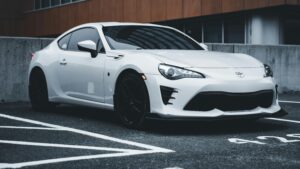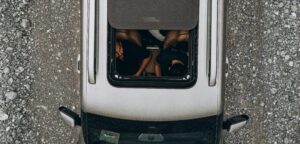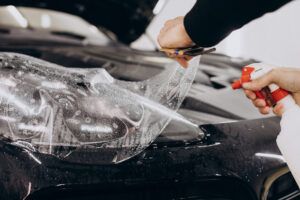You know that feeling when you buy something cheap, thinking you’re saving money, only to replace it three times in the same year? That’s exactly what happens with bargain window tinting in Salt Lake City. The scorching summer sun beating down on your car or office windows doesn’t care about your initial savings – it’s going to test every corner that was cut during installation.
Understanding the Window Tinting Market in Salt Lake City
The window tinting industry in Salt Lake City operates like any other market – you have premium providers, mid-range options, and bottom-feeders who promise the moon for pennies. But here’s what most people don’t realize: window film is a technology product, not just a piece of plastic. The difference between professional-grade ceramic window tint and cheap dyed film is like comparing a smartphone to a calculator.
Salt Lake City’s unique climate creates specific challenges for window films. We experience intense UV radiation at our elevation, dramatic temperature swings between seasons, and that notorious summer heat that can turn your car into an oven. Cheap tints simply aren’t engineered to handle these conditions.
The market has become flooded with installers offering “lifetime warranties” on films that cost them $20 per car to purchase. How can they afford to honor a lifetime warranty on a product that degrades in months? Simple answer: they can’t, and they won’t be around when you need them.
What Makes Window Tinting “Cheap”?
Budget window tinting typically involves several cost-cutting measures that directly impact performance and longevity. First, there’s the film itself. Inexpensive tints use dyed polyester films that absorb heat rather than reject it. This absorbed heat builds up in the film and eventually breaks down the adhesive and dye layers.
The installation process reveals even more corners cut. Professional installation requires specific tools, controlled environments, and experienced technicians. Cheap installers often work in dusty garages, use tap water instead of purified solutions, and employ technicians with minimal training. They might complete your car in 45 minutes when proper installation requires two to three hours.
Materials matter enormously. Professional-grade ceramic window tint in Salt Lake City uses nano-ceramic technology that rejects heat through the physical properties of the ceramic particles. Budget films rely on metal particles or dyes that interfere with cell signals and fade within months.
Then there’s the adhesive. Premium films use pressure-sensitive adhesives designed to bond permanently without bubbling or peeling. Cheap films use water-activated adhesives that never fully cure in our dry climate, leading to those unsightly bubbles and purple edges you see on cars around town.
Hidden Costs of Going Cheap
The real expense of cheap window tinting reveals itself over time. That $99 tint job becomes a $300 problem when you factor in removal and reinstallation. Professional removal of failed tint can cost $150-200 because the degraded adhesive bonds irregularly to the glass, requiring hours of careful scraping and chemical treatment.
Consider the damage to your vehicle’s interior. When cheap tint fails to block UV rays effectively, your dashboard cracks, leather seats fade, and plastic components become brittle. According to research from the International Window Film Association, quality window film can block up to 99% of harmful UV rays, while cheap films often block less than 50% after six months of exposure.
Your health pays a price too. UV exposure through inadequate window tinting contributes to skin damage and increases skin cancer risk. The Skin Cancer Foundation reports that drivers in the United States have higher rates of skin cancer on their left side – the side exposed to sun through car windows. Quality tinting acts as sunscreen for your car.
Energy costs skyrocket when your tint can’t reject heat properly. Your air conditioning system works overtime, increasing fuel consumption and wear on your vehicle’s AC components. In buildings, the impact multiplies across every window, potentially adding thousands to annual cooling costs.
Lost time becomes another hidden expense. You’ll make multiple trips back to the installer for warranty claims they’ll try to avoid honoring. You’ll spend hours researching why your tint turned purple. You’ll waste weekends getting removal and reinstallation done. Time is money, and cheap tint is expensive in time.
Quality Window Tinting Benefits
Professional ceramic window tint transforms your driving experience in Salt Lake City. The heat rejection capabilities of ceramic films can reduce interior temperatures by up to 15 degrees Fahrenheit, making that July commute bearable without blasting your AC at maximum.
Modern ceramic films maintain crystal-clear visibility while rejecting infrared heat. Unlike metallic films, they won’t interfere with your cell phone, GPS, or radio signals. This technology represents decades of research and development, not something cooked up in someone’s garage.
Glare reduction improves driving safety dramatically. Quality films reduce glare without making windows too dark, maintaining legal tint levels while protecting your eyes from harsh reflections off snow in winter or water during summer lake trips.
Professional installation includes proper surface preparation, contamination removal, and precise cutting using computer-guided systems. The installer takes time to ensure every edge seals perfectly, preventing lifting or peeling even after years of window operation.
Long-term value emerges through durability. Premium films maintain their appearance and performance for decades. They won’t turn purple, bubble, or peel. The manufacturer’s warranty actually means something because the company stands behind their product and maintains a network of certified installers.
Choosing the Right Window Tinting Service
Research begins with understanding what questions to ask. Don’t just ask about price – ask about the specific film brand and model they’re proposing. Request specification sheets showing heat rejection rates, UV protection percentages, and warranty terms. Legitimate installers share this information gladly.
Look for shops that maintain controlled installation environments. Dust is the enemy of perfect tint installation. Professional shops use filtered air systems and maintain clean rooms specifically for tinting. They won’t install your tint in a parking lot or regular garage bay.
Certification matters enormously. Manufacturers like 3M, XPEL, and Llumar certify installers who meet their standards for equipment, facility, and technique. These certifications require ongoing training and quality audits. Check our guide to professional window tinting services to understand what separates professionals from amateurs.
Reviews tell stories, but read between the lines. Look for reviews mentioning long-term satisfaction, not just immediate results. Anyone can make tint look good on day one. The real test comes after a year of Salt Lake City weather.
Warranty comparison reveals truth about quality. Lifetime warranties should cover both film defects and installation issues. They should be backed by established manufacturers, not just the installer. Ask what happens if the shop closes – does the warranty transfer to other certified installers?
Price shopping makes sense, but compare apples to apples. Get quotes for the same film type and warranty level. A quote for ceramic film installation will always exceed dyed film, but you’re buying completely different products with vastly different lifespans.
Making the Smart Investment
Calculate total cost of ownership, not just initial price. Quality ceramic tint costing $400-600 for a vehicle lasts 10-15 years. Cheap $99 tint replaced every two years costs $500-750 over the same period, plus removal costs and interior damage from UV exposure.
Consider your specific needs based on Salt Lake City’s climate. If you park outside during summer, heat rejection becomes critical. If you have leather interior, UV protection saves thousands in reupholstery costs. If you have sensitive skin or eyes, optical clarity and glare reduction improve your daily comfort.
Think about resale value. Vehicles with professional tint command higher prices because buyers recognize the value. Purple, bubbling tint actually reduces resale value, marking your vehicle as poorly maintained.
Health benefits justify the investment alone. Protecting your skin from UV damage, reducing eye strain from glare, and maintaining comfortable temperatures without excessive AC use contribute to your well-being every time you drive.
Building owners face even clearer economics. Energy savings from quality commercial window film often pay for installation within 2-3 years. Improved tenant comfort reduces complaints and turnover. UV protection preserves interior furnishings and merchandise.
Window tinting isn’t just about aesthetics or privacy – it’s about creating comfortable, protected spaces whether you’re driving through Salt Lake City traffic or working in a downtown office. The choice between cheap and quality tinting really comes down to whether you want to solve the problem once or keep dealing with it repeatedly.
Quality window tinting represents one of those rare purchases that pays you back every single day through comfort, protection, and peace of mind. In Salt Lake City’s challenging climate, that daily return on investment makes professional ceramic window tint not just a smart choice, but an essential one.
Frequently Asked Questions
How long does ceramic window tint typically last in Salt Lake City’s climate?
Professional ceramic window tint properly installed can last 10-15 years or more in Salt Lake City, maintaining both its appearance and heat rejection properties throughout its lifespan despite our intense UV exposure and temperature variations.
What’s the average cost difference between cheap and quality window tinting for a standard sedan?
Budget tinting typically runs $99-150 for a full sedan, while professional ceramic tint installation ranges from $400-600, though the ceramic option proves more economical when factoring in longevity and replacement costs.
Can cheap window tint actually damage my car’s windows or defroster lines?
Yes, low-quality adhesives can bond irregularly to glass and damage defroster lines during removal, while some metallic films can cause hot spots that stress glass, potentially leading to cracks in extreme temperature conditions.
Why does some window tint turn purple, and how quickly does this happen?
Purple discoloration occurs when cheap dyed films break down under UV exposure, with some films showing color change within 6-12 months in Salt Lake City’s intense sun, while ceramic films maintain their color indefinitely.
Is ceramic window tint really worth 4-5 times the cost of basic tinting?
Ceramic tint’s superior heat rejection, UV protection, signal-friendly properties, and 10+ year lifespan make it cost less per year than cheap tint that needs replacement every 2-3 years, while providing dramatically better performance throughout its life.



